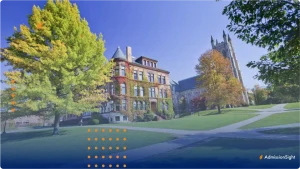Exploring USC Neuroscience
The field of neuroscience is fascinating, and at the University of Southern California (USC), it’s no different. With groundbreaking discoveries being made every day, the USC Neuroscience program has established itself as one of the top academic institutions for neuroscience research. In this article, we’ll explore the various aspects of neuroscience research at USC, from its history to career opportunities for students.
Neuroscience Research at USC: A Brief Overview
Neuroscience research at USC is supported by various entities, including the USC Brain and Creativity Institute, the USC Keck School of Medicine, and the USC Dornsife College of Letters, Arts, and Sciences. These entities work in collaboration with researchers and faculty members from various departments to advance our understanding of the brain and its functions.
One of the major areas of focus in neuroscience research at USC is the study of neurodegenerative diseases such as Alzheimer’s and Parkinson’s. Researchers at USC are working to identify the underlying causes of these diseases and develop new treatments to slow or stop their progression. Additionally, USC is home to cutting-edge technology and facilities, such as the USC Mark and Mary Stevens Neuroimaging and Informatics Institute, which allows researchers to study the brain in unprecedented detail.
The Importance of Neuroscience Research in Academic Institutions
Neuroscience research at academic institutions like USC is essential to our understanding of how the brain works and its potential for disease and disorders. Through research, scientists and doctors can come up with better ways to identify and treat neurological conditions, ultimately improving healthcare for millions of people worldwide.
Understanding the Brain and Its Functions: USC’s Approach to Neuroscience
USC’s approach to neuroscience involves a multidisciplinary approach, where researchers from various departments such as psychology, neuroscience, and biology collaborate. This approach allows for a better understanding of the brain’s complex functions and how they relate to everyday life.
One of the key areas of focus for USC’s neuroscience research is the study of neuroplasticity. This refers to the brain’s ability to change and adapt in response to experiences and environmental factors. By understanding how neuroplasticity works, researchers can develop new treatments and therapies for conditions such as stroke, traumatic brain injury, and neurodegenerative diseases like Alzheimer’s.
The History and Evolution of Neuroscience at USC
The history of neuroscience research at USC dates back to the 1950s when the university established its Neuroscience and Neurobehavioral Research Institute. Over the years, the department has grown, and significant discoveries that have shaped neuroscience have been made by researchers at USC.
One of the most significant contributions made by USC researchers was the discovery of the role of the hippocampus in memory formation. This groundbreaking research was conducted by John O’Keefe and Jonathan Dostrovsky in the 1970s and earned them the Nobel Prize in Physiology or Medicine in 2014. Since then, USC has continued to be at the forefront of neuroscience research, with ongoing studies on topics such as brain plasticity, neurodegenerative diseases, and neural engineering.
Neurological Disorders and Diseases: How USC Contributes to Finding Solutions
USC’s researchers are actively involved in the study and treatment of neurological disorders such as ALS, Alzheimer’s disease, and Parkinson’s disease. The university’s researchers work towards finding solutions to these conditions, including developing early detection methods and innovative treatments.
One of the ways USC contributes to finding solutions for neurological disorders is through its state-of-the-art research facilities. The university has invested heavily in cutting-edge technology and equipment, which allows researchers to conduct advanced studies and experiments. This has led to breakthroughs in understanding the underlying causes of neurological disorders and developing new treatments.
Additionally, USC collaborates with other leading research institutions and medical centers around the world to share knowledge and resources. This global network of experts allows for a more comprehensive approach to tackling neurological disorders and diseases, as researchers can draw on a wider range of expertise and perspectives.
The Role of Technology in Advancing Neuroscience Research at USC
New technological advancements such as functional magnetic resonance imaging (fMRI) and optogenetics have revolutionized neuroscience research. At USC, researchers use these technologies and other innovative techniques to understand the brain’s complex functions, paving the way for exciting new discoveries.
One of the most promising areas of research at USC is the use of virtual reality (VR) to study the brain. By creating immersive environments, researchers can study how the brain responds to different stimuli and situations. This technology has the potential to greatly enhance our understanding of neurological disorders such as PTSD and anxiety and could lead to the development of more effective treatments.
Groundbreaking Discoveries in Neuroscience Made by USC Researchers
USC has a remarkable track record of groundbreaking discoveries that have shaped our understanding of the brain and its functions. For example, USC researchers discovered new insights on memory formation, showing that neurons communicate with each other to store and retrieve memories.
In addition to their work on memory formation, USC researchers have also made significant strides in understanding the brain’s response to stress. Through their research, they have identified specific neural pathways that are activated during stressful situations, shedding light on the physiological mechanisms behind stress-related disorders such as anxiety and depression.
Another area of neuroscience where USC researchers have made important contributions is the study of neuroplasticity. Their work has shown that the brain is capable of changing and adapting throughout a person’s lifetime, challenging the long-held belief that the brain’s structure and function are fixed after a certain age. This research has important implications for the development of new treatments for neurological disorders and for understanding the brain’s potential for learning and growth.
The Future of Neuroscience Research at the University of Southern California
The future of neuroscience research at USC is bright, with the establishment of several new units and facilities. The university is investing in areas such as brain-machine interfaces, neurodegenerative disorders, and neural regeneration, all aimed at improving our understanding of the brain and its functions.
One of the new units that USC has established is the Brain-Body Dynamics Lab, which focuses on studying the interactions between the brain and the body. This lab uses cutting-edge technology to investigate how the brain controls movement and how movement affects brain function. The lab’s research has the potential to lead to new treatments for conditions such as Parkinson’s disease and stroke.
In addition to the Brain-Body Dynamics Lab, USC has also opened the Neural Stem Cell Institute, which is dedicated to studying the potential of stem cells to repair and regenerate damaged neural tissue. This institute brings together experts in stem cell biology, neuroscience, and engineering to develop new therapies for conditions such as spinal cord injury and traumatic brain injury.
Collaboration and Partnerships in the Field of Neuroscience at USC
USC collaborates with various organizations and institutions worldwide to advance neuroscience research. For example, USC has partnered with the National Institutes of Health (NIH) and the National Science Foundation (NSF) to boost research efforts.
In addition to these partnerships, USC also collaborates with other universities and research institutions to further neuroscience research. One such collaboration is with the Max Planck Institute for Brain Research in Frankfurt, Germany. Together, USC and Max Planck researchers are working to better understand the neural mechanisms underlying learning and memory.
Furthermore, USC has established partnerships with industry leaders in the field of neuroscience, such as Medtronic and Boston Scientific. These partnerships allow for the development and testing of new technologies and treatments for neurological disorders, such as Parkinson’s disease and epilepsy.
The Impact of USC’s Neuroscience Research on Society and Healthcare
The impact of USC’s neuroscience research on society and healthcare has been significant. The innovative research conducted by USC has led to new treatments and methods for diagnosing neurological conditions, ultimately improving healthcare for millions of people globally.
One of the most notable contributions of USC’s neuroscience research has been in the field of brain-computer interfaces. USC researchers have developed advanced technologies that allow individuals with paralysis to control prosthetic limbs and communicate through thought alone. This breakthrough has greatly improved the quality of life for those with severe disabilities.
Additionally, USC’s neuroscience research has also shed light on the link between mental health and physical health. Through their studies, USC researchers have shown that conditions such as depression and anxiety can have a significant impact on physical health outcomes, such as heart disease and stroke. This research has led to a greater understanding of the importance of treating mental health conditions in order to improve overall health and well-being.
Career Opportunities for Students Interested in Neuroscience Research at USC
At USC, students interested in neuroscience research can take advantage of various study programs offered by the university. The innovative research conducted at USC opens up numerous career opportunities in the field, such as research scientists and doctors.
In conclusion, Neuroscience research at USC is a vital part of our endeavors to better understand the human brain and its function. Through a multidisciplinary approach, innovative technologies, and groundbreaking research discoveries, USC has established itself as a leading academic institution for neuroscience research, with a positive impact on society and healthcare.
Moreover, USC offers students the opportunity to participate in research projects and gain hands-on experience in the field. This experience can be invaluable for students who wish to pursue a career in neuroscience research, as it provides them with practical skills and knowledge that can be applied in their future work.
Additionally, USC has a strong network of alumni who have gone on to successful careers in neuroscience research. This network can provide students with valuable connections and mentorship opportunities, which can help them to further their careers in the field.
Want to learn more about getting into the University of Southern California? You’ve come to the right place. At AdmissionSight, we have over 10 years of experience guiding students through the competitive admissions process.
AdmissionSight can help you put your best foot forward when applying to college this fall. Contact us today for more information on our services.








































